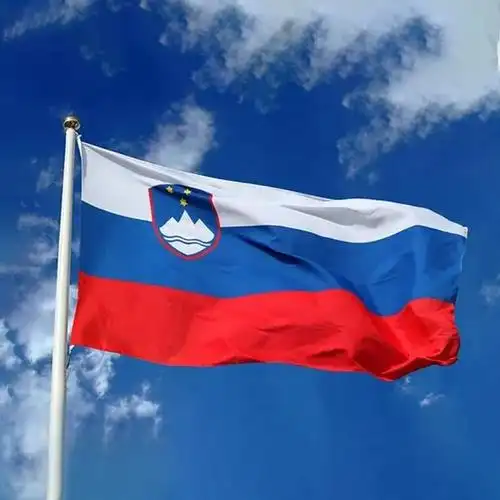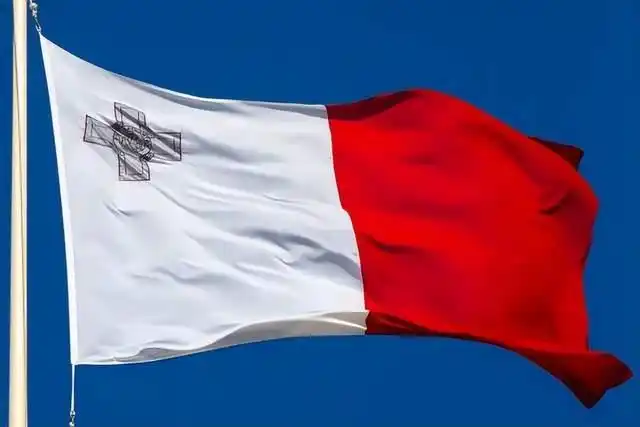Overview of Investment in Slovenia

Overview of Investment in Slovenia
The Republic of Slovenia (Republika Slovenija) is a small developed country located in southern Central Europe, with manufacturing, tourism, and service industries as its economic pillars. It has a profound historical heritage and a superior geographical location.
Basic information
Geographical location: Located at the intersection of the Alps, Dinara Mountains, Danube Plain, and Mediterranean Sea, bordering Italy, Austria, Hungary, Croatia, and the Adriatic Sea to the southwest, with a coastline of 46.6 kilometers.
Area and Population: The country has a land area of 20300 square kilometers and a population of approximately 2.12 million (as of 2023). The capital is Ljubljana.
Climate: It combines mountainous climate, continental climate, and Mediterranean climate, with an average temperature of 21.3 ℃ in summer and -0.6 ℃ in winter.
Politics and Economy
Political system
Implement a parliamentary republic system, with the President serving as the symbolic head of state (current President Natasha Pitts Musar, appointed in 2022) and the Prime Minister holding executive power (current Prime Minister Robert Golob).
After gaining independence from Yugoslavia in 1991, it gradually integrated into the European system, joined NATO and the European Union in 2004, and adopted the euro and joined the Schengen area in 2007.
Economic structure
Manufacturing industry (accounting for 30% of GDP): mainly engaged in automobile manufacturing, electronic equipment, and pharmaceutical and chemical industries, with an industrial growth rate of 4.8% in 2023 and a workforce of 940000.
Tourism industry (accounting for 12% of GDP): Annual revenue of 8.5 billion US dollars, famous attractions including Lake Brad and Triglav National Park, receiving 6.19 million visitors in 2023.
Service industry (accounting for 65% of GDP): covering finance, real estate, and communication technology, supporting economic entities.
Economic data: In 2022, the GDP was 58.9 billion euros, with a per capita GDP of 28000 euros and a growth rate of 5.4%.
history and culture
Early history: ruled by the Austro Hungarian Empire since the 9th century, joined the Kingdom of Yugoslavia in 1918, and gained independence through a referendum in 1991.
Cultural heritage: The fusion of Slavic tradition and Central European culture, with Catholicism as the main religion (accounting for more than half of the population).
Language and ethnicity: The official language is Slovenian, with 83% being Slovenian and the rest being ethnic minorities such as Serbia and Croatia.
international status
Multilateral cooperation: member states of the United Nations, NATO, the European Union and OECD, elected to the United Nations Human Rights Council in 2022.
Regional hub: A developed network of highways, railways, and aviation connects major European economies, attracting foreign investment in key areas such as green economy and digital economy.
Overview of Slovenia's Economy
Baidu homepage setting charming little prince
Web page images, information, videos, notes, maps, Tieba libraries, more
AI search
DeepSeek-R1
Help you answer
Jump to Answer
Change it
Hot search list, livelihood list, financial list
Strive to do better every year
Mao Zedong's only legitimate grandson returns home with his family to pay respects to his ancestors during the Qingming Festival
Chen Yuxi, Quan Hongchan, swept the 10 meter diving platform and won the championship and runner up
During the Qingming Festival, it's not just about outdoor activities that unlock new ways to explore intangible cultural heritage
Two vice national level officials participated in the ceremony of the public sacrifice of Xuanyuan Huangdi
5 Fat Donglai announces lawsuit against blogger for 'red underwear' incident
Over 1200 protests against Trump erupt across the United States
7 American netizens claim that the food collection queue is already full
Don't buy reading glasses like these, the more you wear them, the more your eyes will get blurred
9AI takes you to see how ancient people paid attention to celebrating Qingming Festival
10 billionaires remind the public of the hoarding trend
Can two people with a weight below 300 pounds travel at half price? false
12 Skyworth Gree Crosses Over to Build Cars
The 13th "Legend of the New White Snake" concert will be held in Chengdu
1454 year old Hu Bing's runway show exudes a sense of relaxation
15 Breakfast car, scratch, luxury car, 15 hot egg cakes
There is no time limit for the tool to be retracted. All web pages and files can be searched within the site
The search tool Baidu has found the following results for you
Slovenia's economic profile includes its GDP data, economic growth, and major economic indicators.
GDP data
The GDP data of Slovenia is as follows:
2023: 69.148 billion US dollars, accounting for 0.0651% of the world GDP.
2022: 59.928 billion US dollars, accounting for 0.0589% of the world GDP.
2021: 61.529 billion US dollars, accounting for 0.0629% of the world GDP.
2020: 53.385 billion US dollars, accounting for 0.0622% of the world GDP.
In 2019, it was 53.91 billion US dollars, accounting for 0.0612% of the world GDP.
In 2018: 53.689 billion US dollars, accounting for 0.0618% of the world GDP.
Economic growth situation
Slovenia's economic growth rate in 2024 is 1.6%, lower than the 2.1% in 2023. Economic growth is mainly driven by household and government final consumption expenditures, with government spending increasing by 8.5% and household consumption increasing by 1.6%. However, fixed investment decreased by 2.4%, and the negative contribution of foreign trade balance also dragged down economic growth.
main economic indicators
Government spending: In 2024, government spending increased by 8.5%, significantly driving economic growth.
Household consumption: In 2024, household consumption increased by 1.6%, with significant growth in service consumption, especially in dining and vacation expenses.
Exports: In 2024, exports increased by 3.9%, driving a 4.2% increase in manufacturing activity.
Fixed investment: In 2024, fixed assets investment will decline by 3.7%, with the construction industry being greatly impacted.
The investment prospects in Slovenia are generally optimistic, but there are certain uncertainties and risks.
Advantages of investment environment
Slovenia has high-quality human resources, extensive surrounding connections, excellent infrastructure, and a high-quality living environment, all of which are advantages of its investment environment. The government is also working hard to improve the investment environment and enhance international competitiveness.
Economic growth forecast for 2025
The Slovenian central bank expects that economic growth in 2025 will be driven by multiple factors, including a strong job market, continued nominal wage growth, stable inflation at the European Central Bank's target level of 2%, government spending and infrastructure investment, particularly related to flood repair projects, and the utilization of EU funds. These factors will support economic recovery.
investment opportunity
Slovenia plans to expand or construct a number of energy, logistics, transportation, and tourism projects, including the construction of new thermal power plants, renovation of thermal power plants, and expansion of ports. In addition, the government will also construct railway modernization projects to further enhance the level of infrastructure. These projects provide investors with abundant investment opportunities.




